2016 Triumph Tiger Explorer XCa Review

Updated for the 21st century
Ever since Triumph announced its 2016 model line at EICMA, we’ve been anxiously awaiting the arrival of the updated Tiger Explorer line. As we’ve noted before, the Explorer models have been divided between the XR models, which receives more street-oriented cast wheels, and the XC models, featuring dirt-friendly wire-spoke wheels. All Explorer models are based on the same platform (meaning the same engine, basic suspension specs and wheel sizes) with the designations signifying trim packages. The Explorer XCA tested here represents the top of the Explorer line.
2016 Triumph Tiger Explorer XCA
| Engine | 17.0/20 |
| Suspension/Handling | 13.25/15 |
| Transmission/Clutch | 8.5/10 |
| Brakes | 8.75/10 |
| Instruments/Controls | 4.5/5 |
| Ergonomics/Comfort | 8.5/10 |
| Appearance/Quality | 8.75/10 |
| Desirability | 8.75/10 |
| Value | 8.0/10 |
| Overall Score | 86/100 |
2015 EICMA: Triumph Tiger Explorer
2016 Adventure Bikes Spec For Spec
2016 Triumph Tiger Explorer Uncovered In Spy Photos
For 2016 the Explorer received a mild restyling in the form of updated tank panels and radiator cowls which were designed to direct the engine heat away from the rider. The cockpit panels were also altered for improved air flow. The windshield is now electrically adjustable. The instrument cluster has been updated with a big analog tachometer in the center and LCD panels on either side. All of the suspension, ride modes, and cruise control functions are easily controlled by new, much better thought out switchgear on the grips. As with last year, a convenient 12-volt power port resides just in front of the tank. All of these changes, save one, were a tremendous improvement over the previous generation and takes great strides in bringing the Explorer in line with current adventure-touring trends.
Unfortunately, Triumph’s efforts to reduce cockpit heat aren’t very effective. Whereas we had no complaints about excess heat on last year’s Explorer, the front of our XCA test unit’s seat got so warm that we initially pulled over to make sure that the heated seat was not set on high. On the highway, riding with your knees sticking slightly into the airflow helps draw enough air into the space to ameliorate the problem somewhat, but it is still noticeable. Around town, the heat is even more pronounced. Take the XCA on an extended off-road excursion, and eventually the rider can feel the heat radiating from the tank to knees when standing on the pegs. While this isn’t a deal killer for the Explorer, it is a disappointing development in an otherwise much improved motorcycle.
Semi Active Suspension and Ride Modes
The inclusion of the Triumph Semi Active Suspension (TSAS) transformed the Explorer’s dated-but-reliable persona – that we experienced last year on our 2015 Ultimate Sports-Adventure-Touring Shootout – into a state-of-the-art adventure touring motorcycle. To achieve this level of performance, Triumph moved to premium WP suspension components across the Explorer line with the base models getting manually adjustable items and the rest receiving electronically adjustable units.
The TSAS has three modes: Auto, Road and Off-Road. Auto mode relies on the Chassis Control Unit (CCU) to track the information gathered by the Inertial Measurement Unit (IMU) and the swingarm position sensor on terrain detection to modify the damping – hundreds of times a second – as it senses changes in terrain character. The Road and Off-Road modes are optimized for those two environments. Additionally, the TSAS also automatically controls the rear shock’s preload to suit the bike’s load of rider(s) and cargo, making sure the chassis always has the appropriate attitude. The TSAS features nine adjustment levels, ranging from Comfort to Sport, that can be adjusted on the fly to fine-tune the rider’s preferences within the selected mode.
The suspension’s tunability gives the opportunity to sample varied suspension settings while riding on a particular section of pavement. Although discerning between settings that were just one level apart requires a superhuman level of sensitivity, changing in broader strokes of two or three clicks (with three being enough to move it from Comfort to Normal or Normal to Sport) makes the differences readily apparent. One section of freeway with a rippled surface that I regularly travel highlights how the simple manipulation of a couple buttons can increase rider comfort over the long haul. The ripples on this section of highway are spaced such that they cause many bikes to hobby-horse over them. With the TSAS set in Sport, this front-to-back rocking is quite pronounced – and annoying. Normal mode lessens the action, but Comfort simply allows the chassis to remain relatively steady while the wheels judder over the pavement. Now consider this situation, but lengthen it to say 60 miles, and the beauty of this characteristic of TSAS becomes apparent.
Getting off the superslab and moving on to more circuitous roads is the perfect time to shift the suspension to Sport mode. While you never forget that the Explorer is a big, tall, heavy motorcycle, the firmed up suspenders make it work quite well when conquering a mountain road. The 19-inch front tire definitely keeps the rider from mistaking the XCA for a sportbike, but the newly steepened 23.1° rake and shortened 3.9-in. trail combine with the leverage of the wide bar to make the XCA much more responsive in the esses than last year.
Now would be a good time to consider the updates to the Explorer’s engine. The RbW throttle features easy-to-access ride modes, allowing the rider to change engine maps and thus the character of the engine’s power delivery. A push of a button with the left thumb brings up the ride-mode screen on the instrument panel, giving the choice of Road, Rain, Off-Road , Sport, and a Rider Programmable mode that gives access to all of the power, TC, and ABS settings individually. In the preprogrammed modes, not only is the engine character adjusted, but also the TC, ABS – and TSAS, too.
For example, Road mode emphasizes smooth power delivery for racking up the miles along with standard TC and ABS settings plus Normal TSAS. Engaging Rain mode lessens both the throttle response and the peak power (all other modes allow for full output) while setting both the ABS and TC to intervene more proactively, with the TSAS on Comfort. Off-Road mode delivers a linear throttle response and disconnects the ABS from the rear wheel while the TC also allows more wheelspin before interceding. TSAS is also set to Off-Road. Sport mode (which is only available on the XRT and the XCA) favors snappier throttle response, less intrusive TC, standard ABS, and Sport TSAS. The ride modes also influence the TSAS settings with the Sport mode triggering the Sport suspension setting, Road shifting it to Normal, and Off-Road to Off-Road.
Go and Whoa
Ride-mode-based engine maps aren’t the only changes brought to the engine bay. The 1215cc Triple’s torque curve has been beefed up in the lower rpm range, which is helpful in low-speed off-road conditions. The newly styled exhaust system is smaller in volume and meets the strict Euro 4 emissions standards. Fuel economy increased to a MO tested 41.8 mpg (compared to 35.2 mpg during the flogfest of our Sport-Adventure Tour Shootout). The engine also receives a torque assist clutch which reduces lever effort by 30%, a change that is immediately appreciated in stop-and-go traffic.
The new Hill Hold Control feature is a system developed by Continental that allows the XCA (and XRT) to engage the rear brake when the rider is trying to start on a hill. Anyone who has ever had to get a fully loaded adventure-touring bike underway on a steep, loosely packed hill will appreciate the assist provided by the system. Once engaged by the rider briefly pulling in the front brake while stopped, it monitors the engine rpm, torque output, clutch position, and wheel speed and progressively releases the brake as the system determines that the bike has started moving.
At speed, the Explorer displays all of the characteristics we love from Triumph’s Triples. The increased bottom-end torque is noticeable from the saddle on both pavement and dirt, but the improved ability to lug the engine in more technical dirt sections and have the XCA grunt its way out is appreciated. In addition to the flat torque curve, the engine’s linear power delivery may lack the rush of a top-end peak, but in exchange, the rider receives predictable power no matter where the tachometer needle is pointing.
In the braking department, the Explorer line now sports 4-piston, monoblock Brembo calipers squeezing 305mm floating front discs. The higher-spec models (XRx, XRt, XCx, and XCa) also receive cornering ABS to increase rider confidence when braking mid-corner. While I never purposely sampled the cornering ABS, the Brembo calipers live up to their name, delivering the power and the feedback we’ve come to expect from them.
What’s in the Package?
Triumph’s naming structure for the Explorer models is really quite easy, once you crack the code. For the XC, the subscripts appended to the XC merely differentiate the installed options. The base XC includes the engine updates, Road and Rain modes, Brembo brakes, and adjustable WP suspension. The XCX adds the Off-Road riding mode, TSAS, an updated computer, electronic windshield, and many comfort features, like cruise control. The XCX (Low) moves the seat height down to a minimum of 30.9 in. The XCA adds the Sport and Rider modes, Hill Hold Control, a touring windscreen, tire-pressure monitor, pannier rails, fog lights, heated seats, and some other premium items. Our XCA carries a $20,400 MSRP. Aluminum bags to mount to the rails will add $900 to the price.
Last year, the Explorer was showing its age, but Triumph’s generous application of technology raises the XCA up to the level of the modern Adventure-Touring bikes we tested together last year. The updates bumped the price around $2,800 (with bags) from the bag-equipped XC we tested last year. Given the extent of the improvement of the Explorer, only the excessive crotch heat makes us miss the 2015 model the slightest bit.
2016 Triumph Tiger Explorer XCA
+ Highs
- TSAS
- Ride modes
- Intelligently arranged switchgear
– Sighs
- Engine heat
- Tall and heavy
- Engine vibration blurs mirrors at highway speeds
2016 Triumph Tiger Explorer XCA Specifications | |
|---|---|
| Type | Liquid-cooled, 12 valve, DOHC, in-line Triple |
| Capacity | 1215cc |
| Bore/Stroke | 85.0mm x 71.4m |
| Compression Ratio | 11.0:1 |
| Peak hp | 116.3 hp @ 8500 rpm |
| Peak Torque | 75.2 lb-ft @ 7700 rpm |
| Fuel system | Ride by Wire, fuel injection |
| Final drive | Shaft |
| Transmission | 6-speed, wet, multi-plate hydraulically operated, torque assist |
| Emissions | EURO 4 Compliant |
| Frame | Tubular steel trellis frame |
| Front Wheel | 32 spoke, aluminum rim, 19 x 3.0 in. |
| Rear Wheel | 32 spoke, aluminium rim, 17 x 4.5 in. |
| Front Tire | 120/70 R19 |
| Rear Tire | 170/60 R17 |
| Front Suspension | WP 48mm upside down forks, rebound and compression damping adjustment on fork caps on XC, electronically adjustable damping on XCX and XCA, 190mm travel (or 168mm on low seat version) |
| Rear Suspension | WP monoshock, rebound damping adjustment on XC, electronically adjustable semi active damping on XCX and XCA, 193mm wheel travel (or 158mm on low seat version), hydraulic preload adjustment on XC, automatic preload adjustment on XCX and XCA |
| Front Brake | Twin 305 mm floating discs, radially mounted monobloc Brembo calipers, 4-piston,switchable ABS |
| Rear Brake | Single 282mm disc, Nissin 2- piston sliding caliper, switchable ABS |
| Seat Height | 33.0 – 33.7 in., Low seat version: 30.9 – 31.7 in. |
| Wheelbase | 59.8 in. |
| Rake | 23.1º |
| Trail | 3.0 in. |
| Measured Weight | 625 lb. |
| Fuel Capacity | 5.3 gal. |
| Tested Fuel Economy | 41.8 mpg |
| Available Colors | Crystal White, Matt Khaki Green, Lucerne Blue |
| Warranty | Two years, unlimited miles |

Like most of the best happenings in his life, Evans stumbled into his motojournalism career. While on his way to a planned life in academia, he applied for a job at a motorcycle magazine, thinking he’d get the opportunity to write some freelance articles. Instead, he was offered a full-time job in which he discovered he could actually get paid to ride other people’s motorcycles – and he’s never looked back. Over the 25 years he’s been in the motorcycle industry, Evans has written two books, 101 Sportbike Performance Projects and How to Modify Your Metric Cruiser, and has ridden just about every production motorcycle manufactured. Evans has a deep love of motorcycles and believes they are a force for good in the world.
More by Evans Brasfield



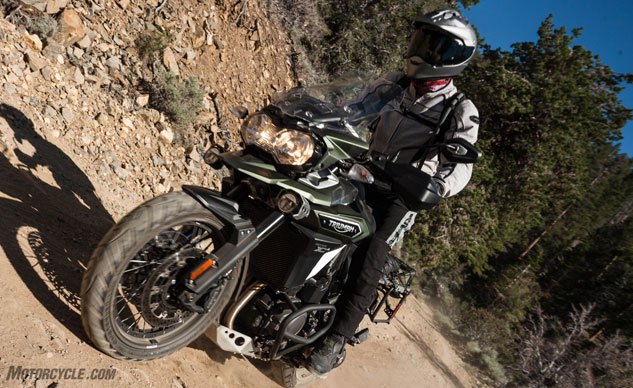
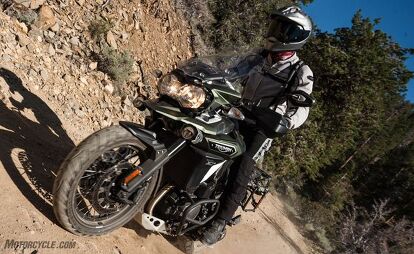
























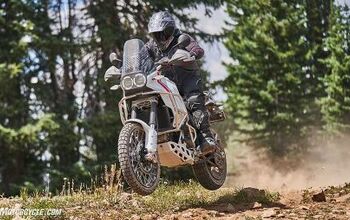


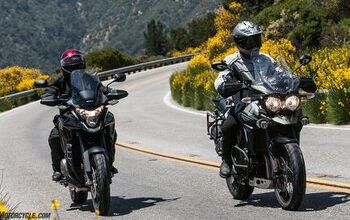


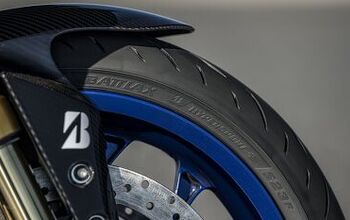











Comments
Join the conversation
Just gotta say it, this bike's engine bay looks like an oil refinery. That is all...
Pretty great except 20k is a lot! Its unfortunately too much. My car was only 15k. It sucks to be poor.